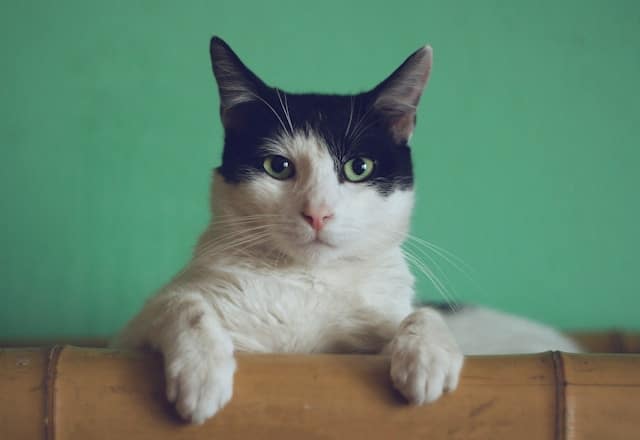Cats, like humans, age. As they transition into their senior years, their needs and behaviors may change. One common concern for pet owners is maintaining the mental and physical health of their older feline friend, particularly if the cat is exclusively an indoor pet. Mental stimulation is crucial to keep your cat’s mind sharp and active, reducing risk of cognitive decline and fostering overall well-being. In this article, we will delve into the various strategies that can help provide mental and physical stimulation for your senior indoor cat, including food enrichment, toy selection, play routines, and even some basic training.
The Importance of Play and Toys
The saying goes, "A tired cat is a happy cat." But it’s not just about physical exhaustion; mental fatigue is also essential for an indoor cat, especially as they age. Here we will discuss the role of toys and play in maintaining your cat’s mental and physical health.
Also to read : What’s the Best Technique for Discouraging Destructive Chewing in Puppies?
Choosing the right toys for your senior cat is key to ensuring they stay engaged and active. Avoid toys that are too small or could easily be swallowed. Some cats may enjoy balls, while others may prefer toys that mimic the movement of prey, such as a feather on a string. Interactive toys might be an added fun as they not only allow your pet to exercise physically but also challenge them mentally.
Remember, the best toy for your cat is the one they will play with. It could be a crumpled piece of paper or a laser pointer. The idea is to keep them moving and thinking. It’s also essential to rotate the toys to prevent your pet from losing interest.
Also read : How to Create a Safe and Engaging Habitat for a Blind Rabbit?
Incorporating Food Enrichment Techniques
Food is more than just a means to satisfy your cat’s hunger. It can also be an excellent vehicle for mental stimulation. In this section, we will explore different food enrichment techniques that you can incorporate to keep your senior cat mentally stimulated.
Puzzle feeders are a popular choice for food enrichment. They require your cat to work a little harder for their meal, encouraging problem-solving and keeping their mind active. You can purchase various types of puzzle feeders for cats, or even make your own.
Another option is to hide your senior cat’s food around your home. This will encourage them to use their hunting instincts and keep them moving and engaged. If your cat is not used to this, start gradually and make sure they can find the food easily to prevent frustration.
Training for Elderly Cats
Training isn’t just for dogs or young cats. Elderly cats can also benefit from learning new tricks or commands, as it provides both mental stimulation and a sense of purpose. Here we will explore some simple training you can do with your senior cats.
Start with simple commands like "sit" or "stay". Use a treat as a reward, and make sure to be patient and consistent. Remember, the goal here is not to have a perfectly trained cat, but to engage them in a rewarding mental activity.
You can also teach your cat to use a scratching post if they are not already doing so. This can help keep their claws healthy and provide another form of stimulation.
Ensuring Physical Stimulation
While mental stimulation is vital, physical stimulation should not be disregarded. The following segment will discuss how to ensure your elderly indoor cat gets enough physical exercise.
Just like humans, cats also need regular physical exercise to keep their body healthy and prevent obesity. Play sessions with toys, running after a laser pointer, or climbing a cat tree can all constitute good exercise for your cat.
Keep in mind, though, your senior cat may not be as agile or active as they once were, so always monitor their reactions and ensure the activities are safe for their age and health condition.
In conclusion, caring for an elderly indoor cat requires a targeted approach for mental and physical stimulation. The use of toys, food enrichment techniques, training, and ensuring physical exercise will not only contribute to your pet’s overall health but also strengthen the bond between you and your feline friend.
Utilizing Environmental Enrichment for Older Cats
Environmental enrichment is a critical aspect of mental and physical stimulation for senior cats. In the following section, we’ll delve into different techniques and strategies you can use to enrich your cat’s environment.
Creating an enriched environment for your cat involves modifying your home setting to cater to your senior cat’s instinctual needs. Scratching posts are an essential addition to your cat’s environment. They allow older cats to exercise their instinct to scratch, which not only helps them shed the loose outer layers of their claws but also allows them to mark their territory.
You could also consider creating vertical spaces for your older cat. Many cats enjoy heights, and it’s a great way for them to get some exercise. Cat trees, shelves, or even a cleared-off bookcase can serve as great vertical spaces. However, ensure that these are safe and easy for your senior cat to navigate.
Moreover, providing a window view can also work wonders for your cat’s mental stimulation. Set up a perch or pillow near a window where birds or squirrels are visible. This will stimulate their predatory instincts, keeping them engaged and entertained.
Litter Box Management for Senior Cats
As cats age, they may encounter problems using the litter box. In this next part, we tackle some strategies to ensure your senior cat continues to comfortably use their litter box.
It’s crucial to have a litter box that is easily accessible for your older cat. Some senior cats may struggle with mobility, so consider getting a litter box with low sides. Having a litter box on each floor of your home can also reduce the distance your cat needs to travel.
Cats are particular about cleanliness, and older cats are no exception. Ensure that the litter box is always clean. If a cat encounters a dirty litter box, they may choose to eliminate elsewhere, leading to unwanted behavior.
Lastly, monitor your cat routinely for any changes in their waste. Any changes might be a sign of health issues, and thus, it’s essential to keep an eye on this aspect of their life.
Conclusion: Keeping the Bond Strong with Your Senior Cat
Caring for an older cat is a rewarding journey that requires patience and understanding. Mental stimulation is a crucial aspect of your senior cat’s life as it keeps them engaged, active, and happy. With a variety of techniques, from toy selection, food puzzles, training, environmental enrichment, and appropriate litter box management, you can ensure your cat’s golden years are comfortable and fulfilling.
Remember, the main goal is not just to keep your cat physically active but also to ensure they are emotionally content and mentally stimulated. By dedicating time to play, train, and interact with your older cat, you strengthen your bond with them. Regular veterinary check-ups will also ensure that your senior cat is in the best health possible. Make these years count, for your cat’s sake and for the joy they bring to your life.











